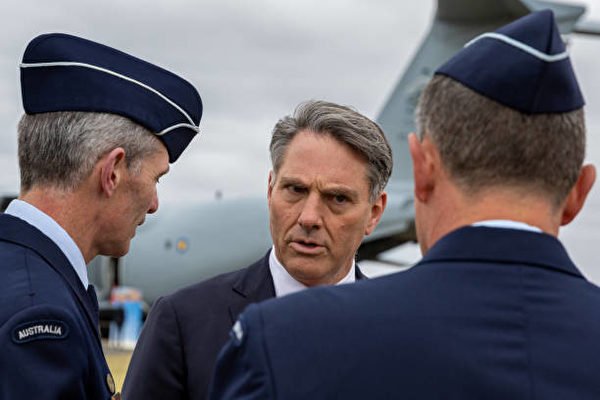In the next ten years, Australia will increase its defense spending by 50.3 billion Australian dollars (approximately 32 billion US dollars) and realign its weapon projects, focusing on the development of missiles, drones, and warships to address the “coercive tactics” of the CCP and the escalating conflict risks in the Pacific region, with a greater emphasis on the Asia-Pacific region.
The majority of the new spending from the 330 billion Australian dollar budget over a ten-year period will only take effect after five years, eventually increasing the defense expenditure as a percentage of GDP from slightly above 2% to 2.4% by 2034.
According to a report by Reuters, Australian Deputy Prime Minister and Defense Minister Richard Marles announced on Wednesday (April 17) that the new funding reflects new priorities such as long-range missiles. Australia believes that in the context of potential conflicts between the U.S. and China that could disrupt the regional order, long-range missiles are necessary.
Marles warned that Beijing is using “coercive tactics” to pursue its strategic objectives and that “Australia no longer has a 10-year strategic conflict warning window”.
Speaking at the National Press Club, Marles said, “The optimistic assumptions that guided defense planning post-Cold War are long gone; the defining feature of our environment is the entrenched and intensifying strategic competition between the United States and China (CCP), creating uncertainty and tension.”
Over 40% of the budget, amounting to as much as 145 billion Australian dollars, will be allocated to the navy, including bolstering the surface fleet, implementing the AUKUS nuclear submarine program, and other priority projects such as the “Ghost Shark” underwater drone.
One-fifth of the budget, about 74 billion Australian dollars, will go towards missile-related projects, whose importance was emphasized in a review last year. The review report stated that new long-range missiles, missile defense projects, and the domestic production of guided weapons will be provided for the air force and army.
Military bases in the entire northern region of Australia will receive up to 18 billion Australian dollars for upgrades. The U.S. Marine Corps conducts multi-month training and exercises there every year.
According to this defense strategy, a “deterrence strategy” will become the new cornerstone of Australia’s defense plan, aimed at deterring before any conflict begins and preventing any potential enemies from coercing Australia through force.
The “deterrence strategy” spans across the sea, land, air, space, cyber, and involves cooperation with the United States and other key partners, especially Japan, New Zealand, as well as partners in Southeast Asia and the Pacific region, including South Korea, India, the United Kingdom, and other European countries.
China has been increasing its influence in the Pacific region in recent years, acting more assertively in the South China Sea, and even engaging in a series of maritime conflicts with the Philippines. Not long ago, the United States, Japan, Australia, and the Philippines held joint military exercises in the South China Sea for the first time, seen as a countermeasure against China.

